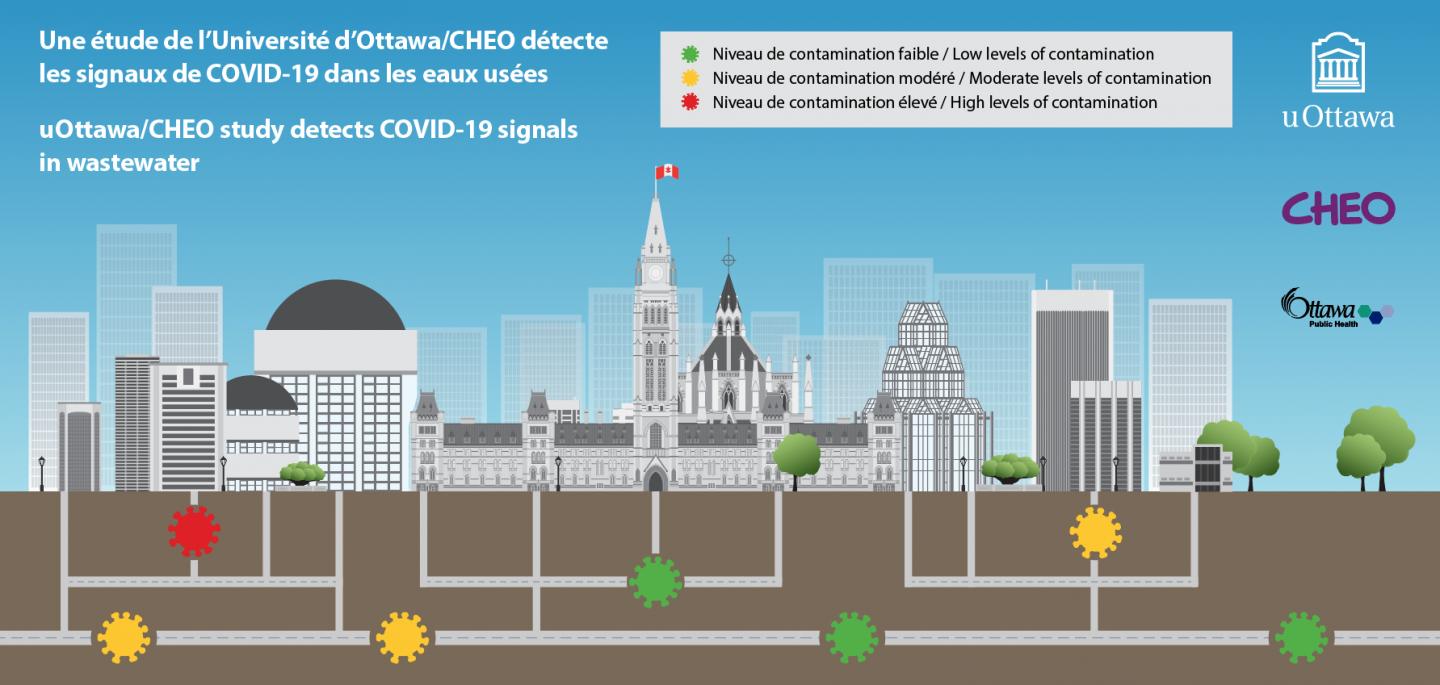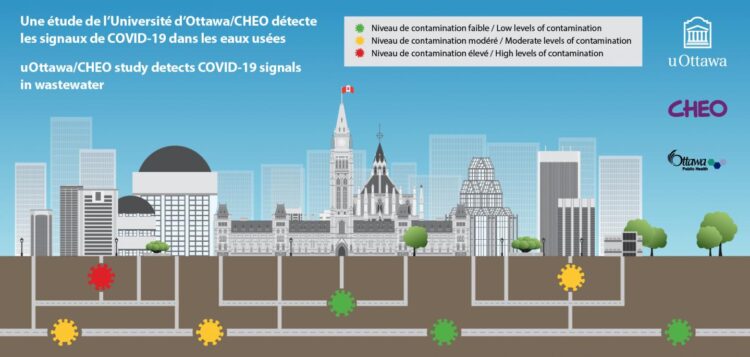Ottawa measuring daily picture of COVID-19 activity in the community to help us determine our best collective response

Credit: uOttawa
Ottawa Public Health (OPH) is receiving new metric to help measure levels of COVID-19 in the community: wastewater.
The National Capital Region is one of the first communities in Canada to conduct daily wastewater readings to help inform its community response in the fight against COVID-19, thanks to innovative research from the CHEO Research Institute (CHEO RI) and the University of Ottawa (uOttawa).
Tracking the number of daily positive cases of COVID-19 is one option to gauge the level of COVID activity in the community. However, since not everyone who has COVID-19 is tested, those numbers may not provide an accurate reading of the whole COVID-19 picture in the population. Furthermore, testing can be a lengthy process and results may take several days to become available.
A promising new public health metric provides early readings of SARS-CoV-2 activity: coronavirus RNA in wastewater. A significant proportion of people with active COVID-19 infections shed the coronavirus (called SARS-VCoV-2) in their stool, sometimes even before their symptoms appear or whether they have symptoms at all.
For the past several months a team of researchers, led by Professor Robert Delatolla from the University of Ottawa and Dr. Alex Mackenzie from the CHEO Research Institute, has been conducting wastewater testing and refining their approach. Currently, five days a week, wastewater is collected and transported to a laboratory where RNA produced from the virus are immediately tested and results are reported the next morning.
Measuring COVID-19 in wastewater has the potential to help OPH and other health agencies measure the level of COVID-19 present in our community, possibly even serving as an early warning system, as we continue to find better early indicators to help in the fight against COVID-19.
For more information on this research, and to obtain the daily presentation of the data, please visit Measuring COVID-19 indicators in Ottawa.
QUOTES:
“This research showed strong potential from its earliest phases,” said Dr. Monir Taha, Associate Medical Officer of Health at Ottawa Public Health. “Now that OPH is receiving daily results, we are getting a good feel of how the wastewater data match or even predict the human test results. We are particularly interested in looking for increases in wastewater findings as an early signal after there has been a downturn in COVID-19 activity.”
“We are excited that our wastewater based community COVID readings shall be shared with our public health experts but also all Ottawa residents as we negotiate the pandemic” said Dr. Alex MacKenzie, Senior Scientist at the CHEO Research Institute, who is co-lead of the study. “Since early September, we have witnessed gradual but significant overall increases in CoV2 traces in Ottawa wastewater consistent with a growing community COVID 19 presence. Of particular concern, some recent daily spikes have even exceeded those seen during last spring’s peak activity signaling to all the need for vigilance in physical distancing wherever possible.”
“This is very exciting! Our overall goal was to develop an epidemiological tool to identify the prevalence of the virus and identify significant increases of the virus in communities ahead of an outbreak,” explained Robert Delatolla, Associate Professor at the uOttawa Faculty of Engineering and study co-lead. “We are thrilled to see that it can have practical applications right here in the region and provide a means to identify resurgences of viral prevalence in communities.”
###
Media inquiries:
Ottawa Public Health
[email protected]
University of Ottawa
[email protected]
CHEO Research Institute
[email protected]
Media Contact
Isabelle Mailloux Pulkinghorn
[email protected]
Original Source
https:/





